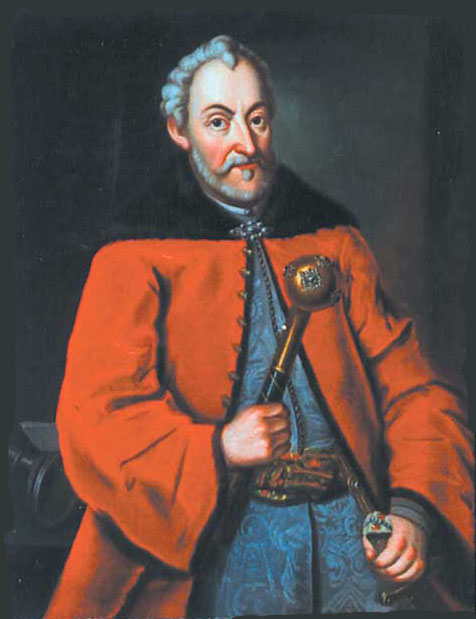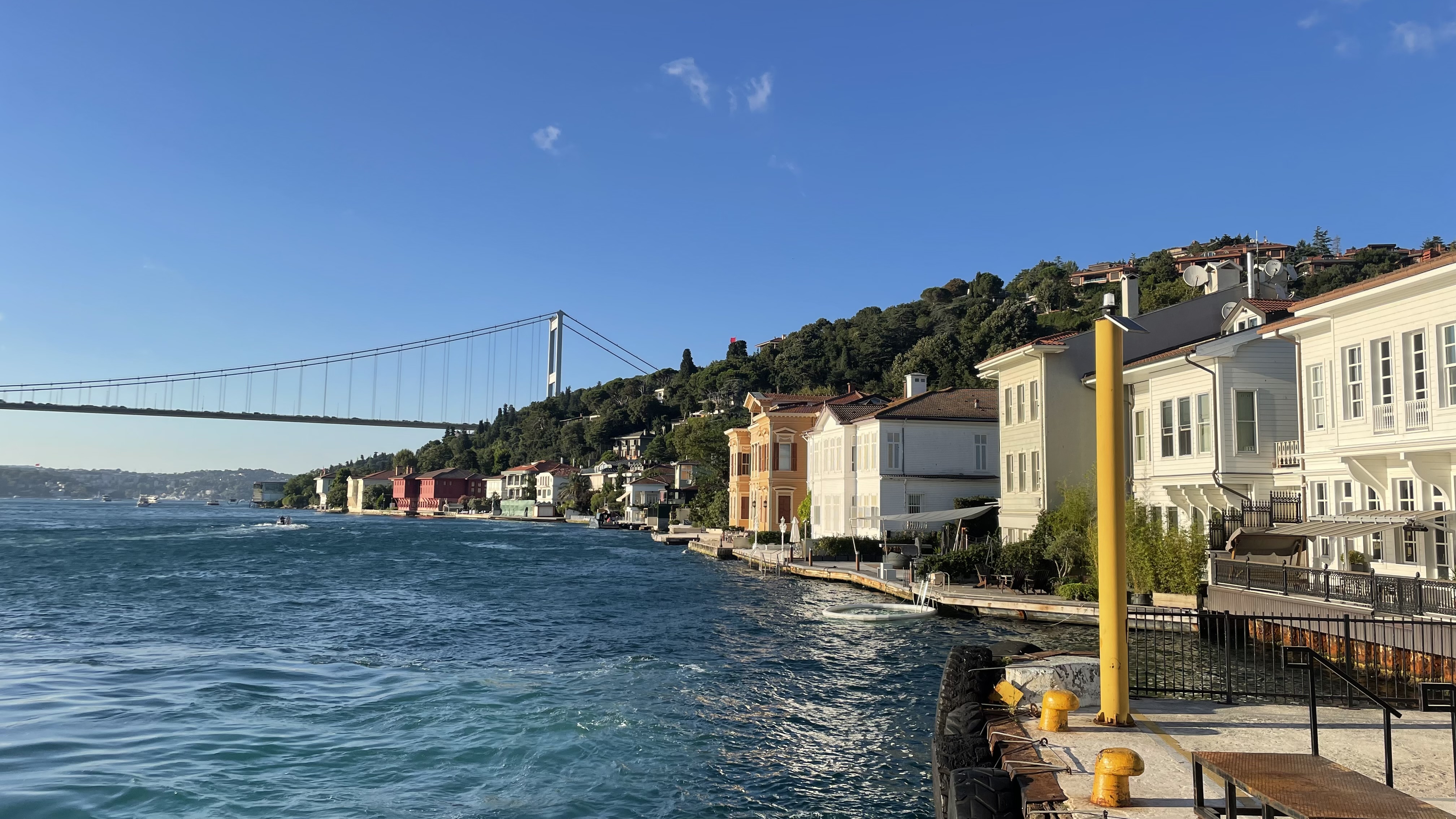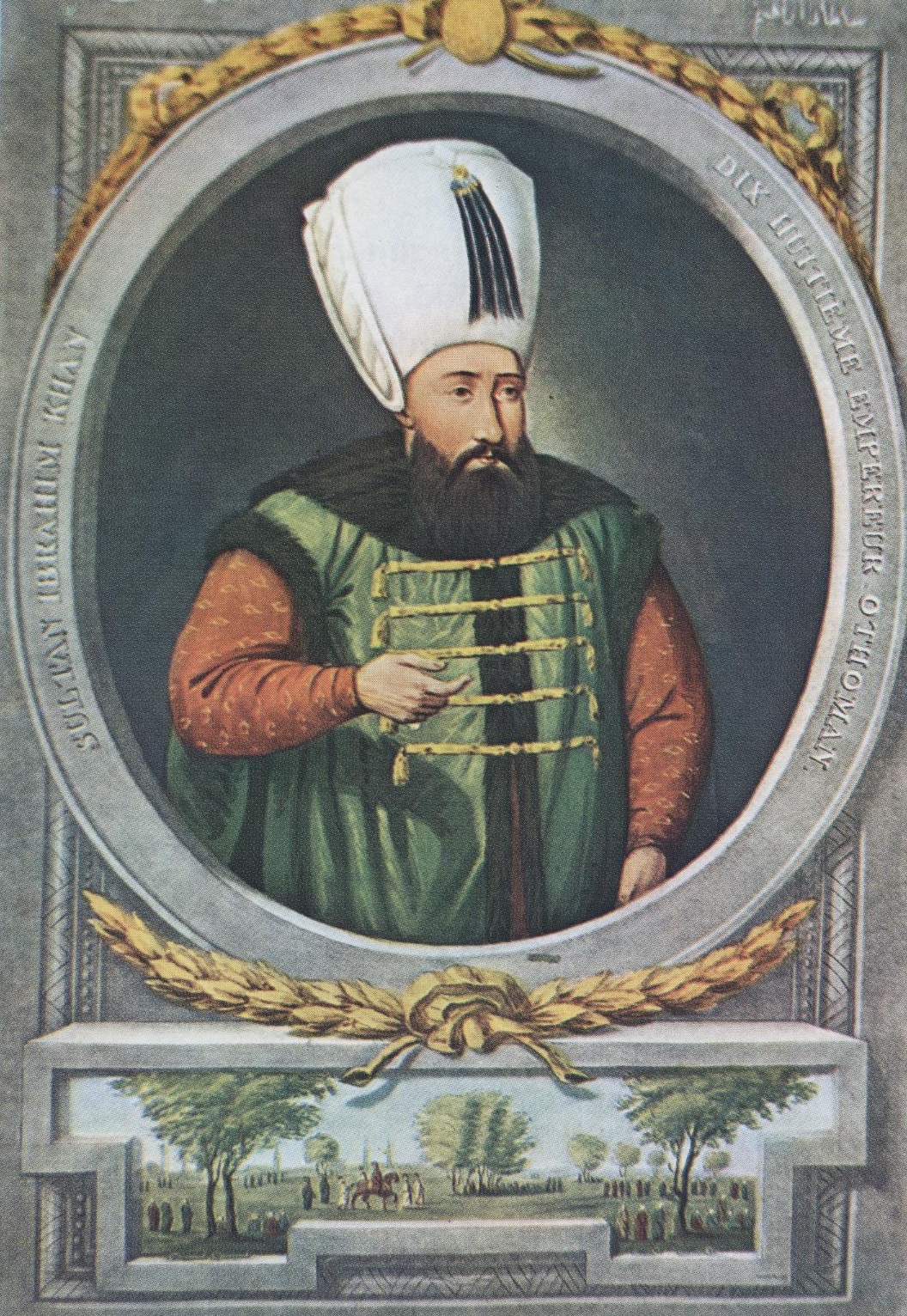|
Ayşe Sultan (daughter Of Ahmed I)
Ayşe Sultan (; 1605, 1606 or 1608Ayşe and her sister Gevherhan Sultan were born one in 1605 and one in 1608, but historians are uncertain about assigning dates – 1657) was an Ottoman princess, daughter of Sultan Ahmed I (reign 1603–17) and Kösem Sultan, half-sister of Sultan Osman II (reign 1618–22) and sister of Sultan Murad IV (reign 1623–40) and Sultan Ibrahim (reign 1640–48) of the Ottoman Empire. Ayşe is known for her many politically motivated marriages. Life Early life Born in Istanbul, Ayşe Sultan was one of Ahmed's daughters by his favourite consort Kösem Sultan. Her birth date is variously estimated as 1605, 1606 or 1608,. When mentioning her and Nasuh Pasha's 1612 wedding, 17th-century historian Mustafa Naima refers to Ayşe as "the youngest of the princesses married in these day". Ottoman princesses were normally married away, to influential Ottoman officials, by their mothers or paternal grandmothers, who had the right to arrange their marriages ... [...More Info...] [...Related Items...] OR: [Wikipedia] [Google] [Baidu] |
Nasuh Pasha
Nasuh Pasha was an Ottoman statesman of Albanian origin. He was grand vizier of the Ottoman Empire from 5 August 1611 until 17 October 1614.İsmail Hâmi Danişmend, Osmanlı Devlet Erkânı, Türkiye Yayınevi, İstanbul, 1971 (Turkish) He was from Gümülcine (modern Komotini) and was a damat to the Ottoman dynasty, as he married an Ottoman princess. He was executed for corruption by Ahmed I in 1614. Biography Nasuh Paha born in Gümülcine, he was an Ottoman politician of Albanian origin. He went young to Istanbul and obtained minor assignments from the menagerie. Thanks to the support of his friend Mehmed Agha he quickly got up and was soon appointed voivod of the Qaḍāʾ of Zile, in Anatolia, and then governor of Fülek in Hungary. He married the daughter of Kurdish prince Mir Sheref becoming rich and powerful, which made him proud and cruel. In 1602 he was appointed governor of Sivas, in 1603 of Aleppo and in 1606 of Diyarbekir. In 1606, he was appointed third vizie ... [...More Info...] [...Related Items...] OR: [Wikipedia] [Google] [Baidu] |
Sunni Islam
Sunni Islam is the largest Islamic schools and branches, branch of Islam and the largest religious denomination in the world. It holds that Muhammad did not appoint any Succession to Muhammad, successor and that his closest companion Abu Bakr () rightfully succeeded him as the caliph of the Muslim community, being appointed at the meeting of Saqifa. This contrasts with the Succession of ʿAlī (Shia Islam), Shia view, which holds that Muhammad appointed Ali, Ali ibn Abi Talib () as his successor. Nevertheless, Sunnis revere Ali, along with Abu Bakr, Umar () and Uthman () as 'Rashidun, rightly-guided caliphs'. The term means those who observe the , the practices of Muhammad. The Quran, together with hadith (especially the Six Books) and (scholarly consensus), form the basis of all Fiqh, traditional jurisprudence within Sunni Islam. Sharia legal rulings are derived from these basic sources, in conjunction with Istislah, consideration of Maslaha, public welfare and Istihsan, jur ... [...More Info...] [...Related Items...] OR: [Wikipedia] [Google] [Baidu] |
Moldavian Magnate Wars
The Moldavian Magnate Wars, or Moldavian Ventures, refer to the period at the end of the 16th century and the beginning of the 17th century when the magnates of the Polish–Lithuanian Commonwealth intervened in the affairs of Moldavia, clashing with the Habsburgs and the Ottoman Empire for domination and influence over the principality. The Magnate Wars (1593–1617) Causes Jan Zamoyski, Polish grand crown chancellor ('' kanclerz'') and military commander (grand crown hetman), known for his opposition towards the Habsburgs, had been a vocal supporter of Commonwealth expansion in the southern direction. Since the early plans made by Commonwealth King Stefan Batory for the war against the Ottomans, Zamoyski supported them, viewing those plans as a good long-term strategy for the Commonwealth. Any policy that was against the Ottomans was also supported by the Holy See, and Pope Sixtus V strongly expressed his support for any war between the Commonwealth and the Ottomans. ... [...More Info...] [...Related Items...] OR: [Wikipedia] [Google] [Baidu] |
Budin Eyalet
Budin Eyalet (also known as Province of Budin/Buda or Pashalik of Budin/Buda, ) was an administrative territorial entity of the Ottoman Empire in Central Europe and the Balkans. It was formed on the territories that Ottoman Empire conquered from the medieval Kingdom of Hungary and Serbian Despotate. The capital of the Budin Province was Budin (Hungarian: Buda). Population of the province was ethnically and religiously diverse and included Hungarians, Croats, Serbs, Slovaks, Muslims of various ethnic origins (living mainly in the cities) and others (Jews, Romani, etc.). The city of Buda itself became majority Muslim during the seventeenth century, largely through the immigration of Balkan Muslims. History In the 16th century the Ottoman Empire had conquered the southern "line of fortresses" (végvár) of the Kingdom of Hungary. After the Battle of Mohács where the Kingdom of Hungary was heavily defeated, and the turmoil caused by the defeat, the influence was spread on the ... [...More Info...] [...Related Items...] OR: [Wikipedia] [Google] [Baidu] |
Beylerbey
''Beylerbey'' (, meaning the 'commander of commanders' or 'lord of lords’, sometimes rendered governor-general) was a high rank in the western Islamic world in the late Middle Ages and early modern period, from the Anatolian Seljuks and the Ilkhanids to Safavid Iran and the Ottoman Empire. Initially designating a commander-in-chief, it eventually came to be held by senior provincial governors. In Ottoman usage, where the rank survived the longest, it designated the governors-general of some of the largest and most important provinces, although in later centuries it became devalued into a mere honorific title. The title is originally Turkic and its equivalents in Arabic were ''amir al-umara'', and in Persian, ''mir-i miran''. Early use The title originated with the Seljuks, and was used in the Sultanate of Rum initially as an alternative for the Arabic title of ''malik al-umara'' ("chief of the commanders"), designating the army's commander-in-chief. Among the Mongol ... [...More Info...] [...Related Items...] OR: [Wikipedia] [Google] [Baidu] |
Üsküdar
Üsküdar () is a municipality and district of Istanbul Province, Turkey. Its area is 35 km2, and its population is 524,452 (2022). It is a large and densely populated district on the Anatolian (Asian) shore of the Bosphorus. It is bordered to the north by Beykoz, to the east by Ümraniye, to the southeast by Ataşehir and to the south by Kadıköy; with Karaköy, Kabataş, Beşiktaş, and the historic Sarayburnu quarter of Fatih facing it on the opposite shore to the west. Üsküdar has been a conservative cultural center of the Anatolian side of Istanbul since Ottoman times with its landmark as well as numerous tiny mosques and dergahs. Üsküdar is a major transport hub, with ferries to Eminönü, Karaköy, Kabataş, Beşiktaş and some of the Bosphorus suburbs. Üsküdar is a stop on the Marmaray rail service at the point where it starts its journey under the Bosphorus, re-emerging on the European side at Sirkeci. Via Marmaray, Üsküdar is linked to Gebz ... [...More Info...] [...Related Items...] OR: [Wikipedia] [Google] [Baidu] |
Grand Vizier
Grand vizier (; ; ) was the title of the effective head of government of many sovereign states in the Islamic world. It was first held by officials in the later Abbasid Caliphate. It was then held in the Ottoman Empire, the Mughal Empire, the Sokoto Caliphate, the Safavid dynasty, Safavid Empire and Morocco, Cherifian Empire of Morocco. In the Ottoman Empire, the grand vizier held the imperial seal and could convene all other viziers to attend to affairs of the state; the viziers in conference were called "''Kubbealtı'' viziers" in reference to their meeting place, the ''Kubbealtı'' ('under the dome') in Topkapı Palace. His offices were located at the Sublime Porte. Today, the Prime Minister of Pakistan is referred to in Urdu as ''Wazir-e-azam'', which translates literally to grand vizier. Initially, the grand viziers were exclusively of Turk origin in the Ottoman Empire. However, after there were troubles between the Turkish grand vizier Çandarlı Halil Pasha the Younger and S ... [...More Info...] [...Related Items...] OR: [Wikipedia] [Google] [Baidu] |
Fatma Sultan (daughter Of Ahmed I)
Fatma Sultan (, "''one who abstains''"; 1606/1607, Topkapi Palace, Constantinople, – 1670,) Constantinople) was an Ottoman princess. She was the daughter of Sultan Ahmed I (r. 1603–1617) and Kösem Sultan, sister of Murad IV (r. 1623–1640) and Ibrahim (r. 1640–1648), and the paternal aunt of Mehmed IV (r. 1648–1687). She is known for her many political marriages. Life The year of her birth has been suggested as 1606 or 1607. She lived in Topkapi Palace until her father's death in 1617, when she had to follow her mother and sisters to Eski Saray. She returned to court in 1623, when her younger brother Murad IV became the new sultan. Marriages The Ottoman princesses were normally married away, to influential Ottoman officials, by their mothers or paternal grandmothers, who had the right to arrange their marriages and arranged matches which could be of political use. They had privileges in marriage which separated them from other Muslim females: such as the right to be ... [...More Info...] [...Related Items...] OR: [Wikipedia] [Google] [Baidu] |
Mustafa Naima
Mustafa Naima (; ''Muṣṭafā Na'īmā''; Aleppo, Ottoman Syria 1655 – 1716) was an Ottoman bureaucrat and historian who wrote the chronicle known as the ''Tārīḫ-i Na'īmā'' (''Naima's History''). He is often considered to be the first official historian of the Ottoman Empire, although this formal office was probably not created until the time of his successor, Rashid. Life and career Mustafā Na'īm was born the son of a Janissary in Aleppo, Ottoman Syria. He joined the palace guard in Constantinople and was educated as a secretary there. He rose in the financial administration of the empire until the palace intrigues caused him to be sent to a provincial administrative post in 1715. As a historian Naima mentions the arrival of Mughal ambassadors: Qaim Beg, Sayyid Ataullah and Hajji Ahmad Saeed, sent by the Mughal Emperor Shah Jahan. The ambassadors lodged in the Seraglio of Saiwush Pasha. He died in Patras. Works Na'īmā's main work is the ''Ravżatu'l-Ḥ� ... [...More Info...] [...Related Items...] OR: [Wikipedia] [Google] [Baidu] |
Ibrahim Of The Ottoman Empire
Ibrahim (; ; ; 13 October 1617 – 18 August 1648) was the sultan of the Ottoman Empire from 1640 until 1648. He was born in Constantinople as the last son of sultan Ahmed I and Kösem Sultan, an ethnic Greek originally named Anastasia. He was called Ibrahim the Mad () due to his mental condition and behavior. However, historian Scott Rank notes that his opponents spread rumors of the sultan's insanity, and some historians suggest he was more incompetent than mad. Early life Ibrahim was born on 13 October 1617 as the last son of Sultan Ahmed I and his Haseki Sultan, Kösem Sultan and when he was merely a month old, his father suddenly died and Ibrahim's uncle Mustafa I became the new sultan. Kösem Sultan and her children, including an infant Ibrahim, were sent to the Old Palace. After his brother Murad IV inherited the throne from his uncle Mustafa I, Ibrahim was confined in the Kafes, which affected his health. Murad had Ibrahim's two surviving half-brothers Şehzade B ... [...More Info...] [...Related Items...] OR: [Wikipedia] [Google] [Baidu] |
Murad IV
Murad IV (, ''Murād-ı Rābiʿ''; , 27 July 1612 – 8 February 1640) was the sultan of the Ottoman Empire from 1623 to 1640, known both for restoring the authority of the state and for the brutality of his methods. Murad IV was born in Constantinople, the son of Sultan Ahmed I (r. 1603–17) and Kösem Sultan. He was brought to power by a palace conspiracy when he was just 11 years old, and he succeeded his uncle Mustafa I (r. 1617–18, 1622–23). Until he assumed absolute power on 18 May 1632, the empire was ruled by his mother, Kösem Sultan, as ''nāʾib-i salṭanat'' (regent). His reign is most notable for the Ottoman–Safavid War (1623–1639), Ottoman–Safavid War, of which the Treaty of Zuhab, outcome would partition the Caucasus between the two Imperial powers for around two centuries, while it also roughly laid the foundation for the current Turkey–Iran–Iraq borders. Early life Murad IV was born on 27 July 1612 t ... [...More Info...] [...Related Items...] OR: [Wikipedia] [Google] [Baidu] |






